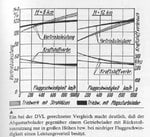renrich
Chief Master Sergeant
A question has been bugging me and I hope some of you more technically minded can answer it. The P47 had a turbo supercharged engine which allowed the engine to hold up it's power from sea level to quite high altitude and it seemed to work well. The P38 and some bombers like the B17 also used turbo chargers. AFAIK, the Spitfire, BF109, FW190, Corsair, Hellcat, etc. all used superchargers which had peaks in the performance curves and did not keep the power up entirely much above 25000 feet. Why did not those premier fighters use turbo superchargers operationally?

